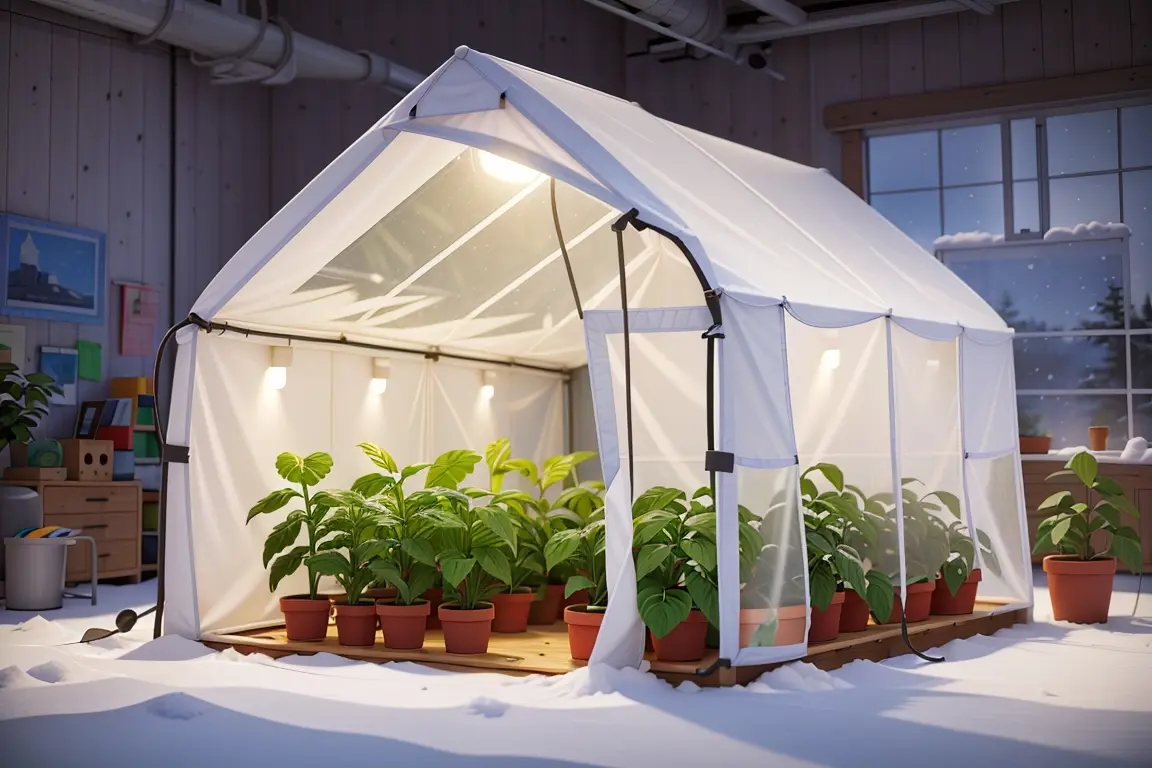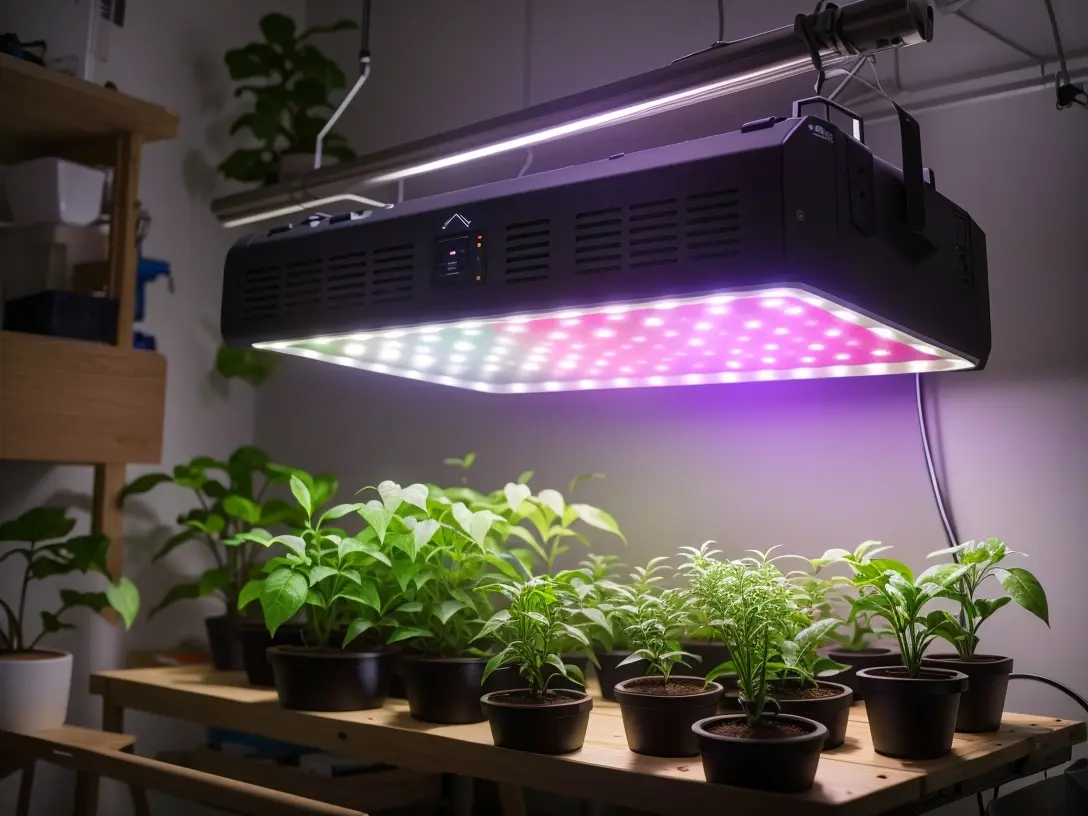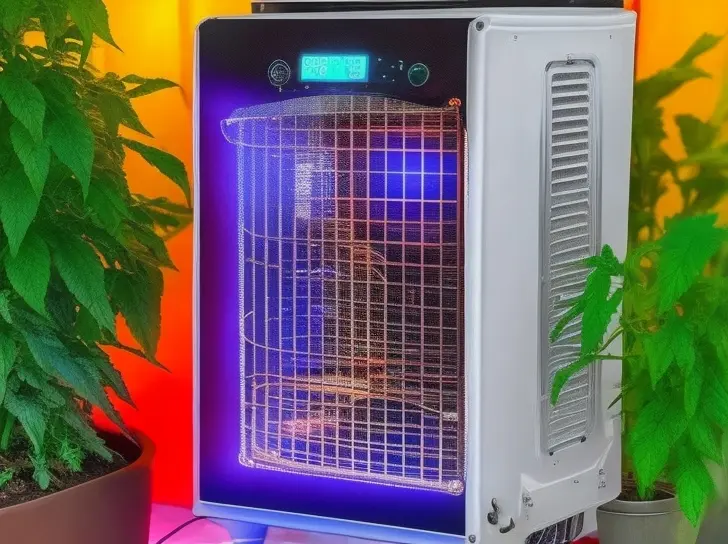How to Keep Grow Tent Warm in Winter (9 Best Methods)

The chill of winter comes with unwanted trouble for indoor plant growers. Keeping your grow tent warm becomes difficult as temperatures drop.
If it gets too cold inside the tent, your plants will become stressed. On the other hand, if the tent gets too hot, plant growth may slow, resulting in lower yields.
Fortunately, there are proven ways to keep your grow tent warm even when it’s freezing outside.
This blog post uncovers all of them for you.
Things to know
Why You Can Trust Farmingram
Our advice comes from real science and intense research—not sponsored posts. Our goal is simply to translate unbiased info into practical guidance that boosts your tent or farm. When it comes to dialing in ideal conditions like temperature, you can trust we’ve done the homework. These winter grow tent tips will help maximize your space and get your plants thriving!
Quick Key Takeaways
1. Insulate the Tent: Insulate the tent walls, floor, and ceiling with reflective insulation, rigid foam boards, or bubble wrap to retain heat.
2. Seal Air Leaks: Seal any air leaks around zippers, ducting ports, floor seams, and frame joints with tape, caulk, or insulation panels.
3. Choose the Right Size Tent: Aim for the smallest size that can comfortably fit your intended number of plants.
4. Place in a Warm Spot: Position the tent in the warmest area of your home, away from exterior walls, windows, vents, and drafty spots.
5. Use the Right Growing Lights: Use grow lights that emit radiant heat, like HPS, CMH, or incandescent bulbs. Balance with LEDs for full spectrum light.
6. Use a Thermostat: Install a thermostat to precisely control temperature and prevent overheating.
7. Consider a Space Heater: Consider a space heater on a timer to provide supplemental heat matched to the lights-on period. Opt for ceramic or oil-filled heaters.
8. Consider Heat Mats: Use heat mats under pots to gently warm plant root zones. Choose mats with built-in thermostats.
9. Choose Cold-Hardy Varieties: Select naturally cold-tolerant plant varieties like kale, lettuce, spinach, radishes, cabbage, and peas.
1. Insulate the Tent

Adding insulation to your grow tent is one of the most effective things you can do to retain heat in winter.
There are several economical insulation materials commonly used by indoor gardeners:
Learn more about R-value here.
FYI: While Fiberglass batts are also a popular insulation option, I didn’t recommend using them mainly because they can be itchy and irritating to the skin, eyes, and lungs (source).
To keep grow tent temperatures ideal during winter, use these materials to slow heat transfer.
2. Seal Air Leaks
While tent walls may be insulated, small gaps and leaks can still allow warm air to escape and let cold drafts in.
Sealing these potential air leaks is crucial for keeping your tent warm.
Here are some trouble spots to look for:
Take time to seal any crack or crevice where air could sneak in or out.
Worth Trying: Monitor your tent interior with an incense stick to help spot problem areas.
3. Choose the Right Size Tent
When trying to keep your grow tent warm, bigger is not always better.
The more interior space that needs to be heated, the more challenging it will be to maintain ideal temperatures.
Aim to purchase the smallest tent that can comfortably accommodate your intended number of plants.
As a general guideline:
| Tent Size | Ideal Plants |
| 2′ x 2′ tent | Great for mother plants (1-2 plants) |
| 3′ x 3′ tent | Ideal for 3–9 plants |
| 4′ x 4′ tent | Spacious for 9–16 plants |
| 5′ x 5′ tent | Can hold 16–25 plants |
Remember that plants need some room between them as they grow larger in the bloom phase.
So don’t just default to the largest tent you can buy.
Carefully consider your plant count and choose a tent size to closely match that number for easier winter heating.
4. Place in a Warm Spot
Where you locate your grow tent within your home can make a big difference in how easy it is to keep warm.
Some tips on finding a warm tent spot:
By planning ahead, you can position your grow tent to benefit from the natural warmth around it.
This gives you a head start on keeping the perfect conditions inside.
5. Use the Right Growing Lights

When it comes to growing plants in a tent during winter, the type of grow lights you choose is important.
Here are some of the best types of grow lights for a grow tent during winter:
I always recommend pairing these heating lights with LEDs to balance heat and complete spectrums.
The right lighting is definitely key.
FURTHER READING: How to Use a Grow Light for Indoor Plants: No-Nonsense Guide
6. Use a Thermostat
Monitoring and controlling temperature is critical for success. This allows you to precisely regulate the environment.
A thermostat serves two important functions:
- It can turn supplemental heating on and off as needed to maintain your desired temperature range.
- It prevents overheating, which can happen quickly in a small insulated tent. Once you achieve the target temperature, the thermostat automatically shuts the heater off.
I recommend choosing a digital thermostat with a built-in humidistat as well. Keeping humidity in check is also crucial during the winter months.
A good location for a thermostat is at plant height near the center of the growing area (source).
SIDENOTE: Thermostats and sensors should be shielded from direct sunlight, as this can give false readings (source).
7. Consider a Space Heater

During the winter, it’s a good idea to keep a space heater in your tent for extra warmth. Based on extensive research and participating in forum discussions, I have some advice:
While space heaters require caution, a good quality model paired with a thermostat and a timer provides reliable hands-off heating.
8. Consider Heat Mats
Heat mats are an excellent supplemental heating source for your winter grow tent.
They provide gentle warmth directly to your plants’ root zones and the surrounding tent floor area. This helps maintain optimal root temperatures for better nutrient uptake and growth (source).
Here are some best practices I’ve learned:
In my experience, heat mats are very useful for warming plants that are sensitive to cold, like basil or pepper.
Pairing mats with an interior tent heater provides well-rounded heating.
9. Choose Cold-Hardy Varieties
I’ve learned that plant variety selection plays a big role in the ease of winter growing. Some of them naturally tolerate colder temperatures better than others.
Here are some cold-tolerant options worth considering:
To state the obvious, choosing naturally resilient varieties allows you to rely less on supplemental heating.
Conclusion
As this post has shown, there are many effective methods to maintain ideal temperatures even when it’s freaking frigid outside.
With the right strategies, winter doesn’t have to limit your indoor farming ambitions.
In fact, it can be the perfect time to experiment and expand your skills.
Imagine all the things you could grow this winter in a cozy indoor environment!
FURTHER READING: 3 Best Air Conditioners for Grow Tent and Grow Room (2024)
FAQs
Meet your guide
Dhruvir Zala